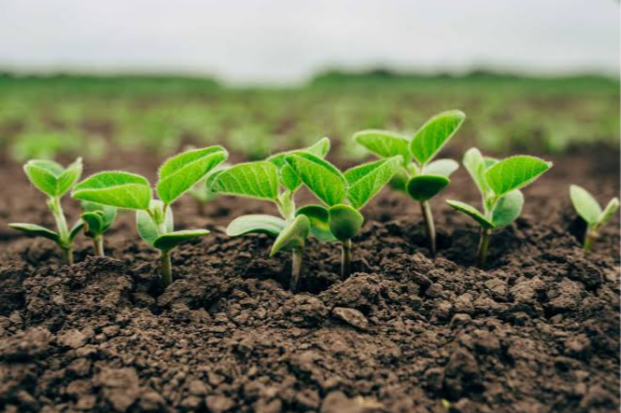
Soil is the thin layer covering the outer earth’s surface.It is formed from soil parent materials which are derived from rocks.
Simply defined, soil is derived from parent materials. The parent materials are derived when rocks weathered or disintegrate (broken down). Therefore, soils are derived from rocks.
It is therefore necessary to have understanding of the composition of rocks and their characteristics.
A rock is a solid mass of geological materials composed of solid crystals of different minerals that have been fused together to form a solid lump material on the surface of the earth or within the earth crust. Or Rock can also be defined as aggregates of inorganic substances called minerals. Some rocks consist of a single mineral while majority consist of several minerals in varying proportions.
A mineral is a natural unit that make up most rocks. By definition, minerals are naturally occurring inorganic substances which has a fairly definite chemical composition and definite physical characteristics.
There are about 2000 or more minerals found in the earth crust. Examples include Gold, diamond, uranium etc. Out of these minerals, only a few are found in rocks. The minerals found in rocks are called rock forming minerals.
TYPES OF MINERALS
1. Primary minerals
2. Secondary minerals
PRIMARY MINERALS: These minerals are formed from the cooling and solidification of molten magma. For example Olivine, quartz, hornblend, feldspar, biotite, muscovite, augite etc
SECONDARY MINERALS: These minerals are formed from the decomposition of primary minerals. For example Hematite, kaolinite, motmorinite, limonite, illite etc.
Soils formed from rocks containing any of the minerals will also be composed of that minerals. This makes it easy to determine the rocks that form a particular type of soil.
ROCKS
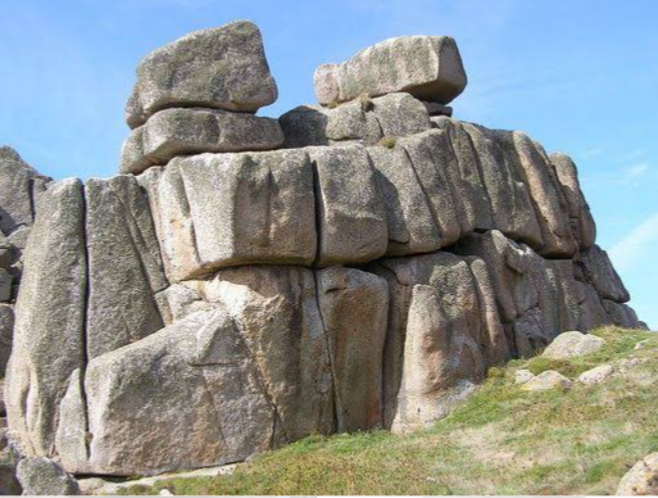
The Rock is a solid mineral found on surface of the earth, within the earth crust, and in seas or oceans.
There are three types of rocks based on their formation. They include Igneous rock, sedimentary rock and metamorphic rock.
IGNEOUS ROCKS: Igneous rock is formed from the cooling and solidification of a parent molten magma. This means that igneous rock is composed of primary minerals.
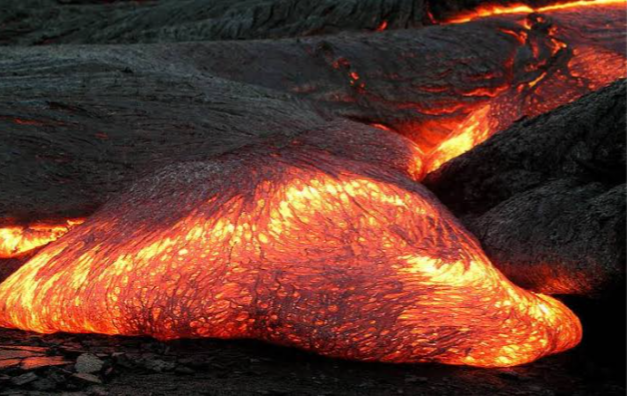
Molten magma are found at great depth beneath the earth crust. It is a very hot material composed of ions of elements. When it cools, the iona fuse with one another to form a crystal of minerals.
When openings are created from the surface of the earth to the crust due to physical movement of the earth, and it widens, molten magma will flow out with great force to the outer atmosphere ( surface of the earth). This is called volcano. Rapid cooling of the magma will occur. As a matter of Fact, the ions will not be able to fuse together. Therefore, the kind of igneous rocks formed will depend on the minerals formed from the magma. During volcanic eruption, magma flows to the earth surface, and when it cools, it forms volcanic or extrusive rock. Not all magma gets to the atmosphere. When magma gets stocked at the mid point of the crust, it cools down slowly because it receives heat from magma below. Due to the long period of cooling, the ions sort themselves and they form beautiful large crystals. The crystals are referred to as coarse grain. Such igneous rock formed within the crust is referred to as intrusive or plutonic igneous rock
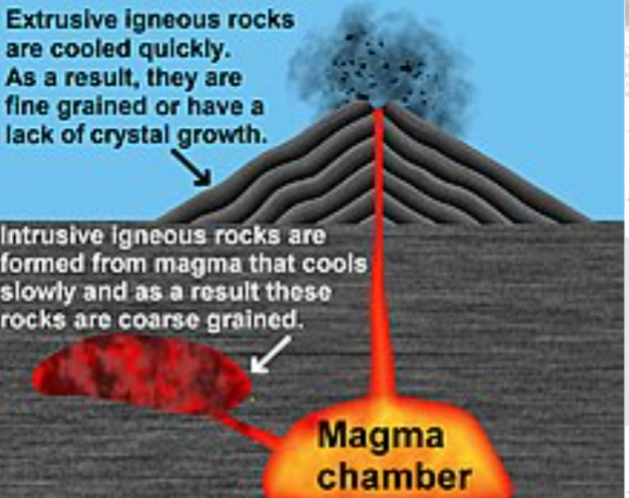
The extrusive igneous rocks are made up of fine crystals that are not very visible. This is due to the rapid cooling at the surface of the earth.
When the cooling of the magma is so rapid, crystals will not be formed,. Therefore the ions in the magma will congealed to form non crystalline rocks called glassy.
The colour of igneous rocks reflect the kind of minerals presented in them. For example, dark coloured igneous rocks are rich in ferro-magnesia minerals such as olivine, hornblend etc. While light coloured igneous rocks are rich in light coloured minerals such as quartz, and feldspar.
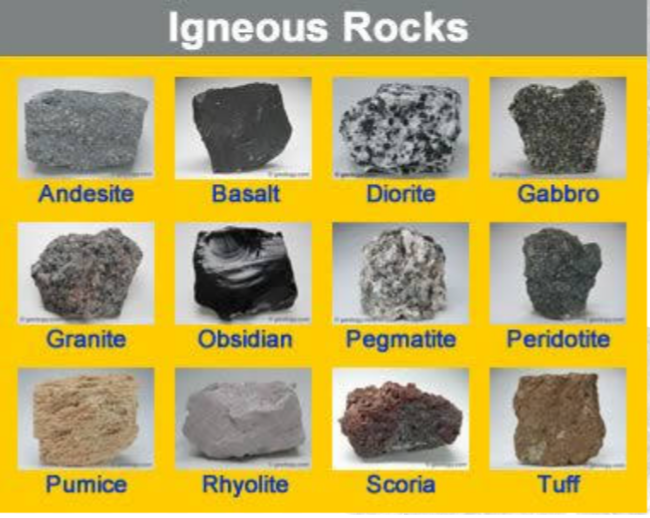
SEDIMENTARY ROCKS
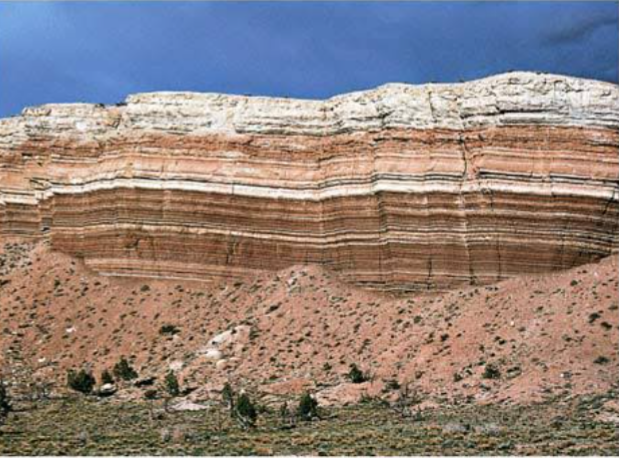
These are rocks formed by cementation or compaction of sediments derived through the weathering of older rocks like igneous rocks. These older rocks are broken down by agents of geological denudation such as rain, wind, ice, and river etc. Or they can be described as being formed from deposits of pre-existing rocks or pieces of once-living organism that accumulate on the Earth’s surface.
GROUPS OF SEDIMENTARY ROCKS
There are three classes of sedimentary rocks based on the origin and nature of the original sediments. The groups are: Clastic, chemical and organic sedimentary rocks.
CLASTIC SEDIMENTARY ROCK
Clastic sedimentary rocks are made up of pieces (clasts) of pre-existing rocks loosened by weathering. They are composed of primary particles of broken rocks. These rocks have particles ranging in size from microscopic clay size to huge boulders (large rock fragments) particles (that is 0.002mm to 250mm). Their names are determined by the clast or grain size. The smallest grains are called clay, then silt, then sand. Grains larger than 2 millimeters are called pebbles.
Clastic sedimentary rocks are further grouped into three based on their size: they include: conglomerates, sandstone and shales.
CONGLOMERATES: These are sedimentary rocks formed by the cementation of large particles greater than 2mm in diameter. The particles include boulders, stones and gravels
SANDSTONES: The are sedimentary rocks formed by compaction and cementation of sand size particles.
SHALES: These are sedimentary rocks formed by the compaction of silt size and clay size particles.
CHEMICAL SEDIMENTARY ROCKS:
Chemical sedimentary rocks are composed of minerals precipitated from solutions which accumulate and later compacted to form rocks. That is, they are formed by chemical precipitation that begins when water travels through rock and dissolves some of the minerals. The minerals are then carried away from their source and eventually redeposited, or precipitated, when the water evaporates. The common chemical sedimentary rocks include Gypsum (CaSO4. 2H2O), Limestone ( CaCO3), Calcite
ORGANIC OR BIOLOGICAL SEDIMENTARY ROCKS
Biologic sedimentary rocks are formed from altered organic remains such as animal shells, or wood. That is, they are form when living organisms that die, pile up, and are then compressed and cemented together. Example of biologic sedimentary rock include coal, limestone and coquina.
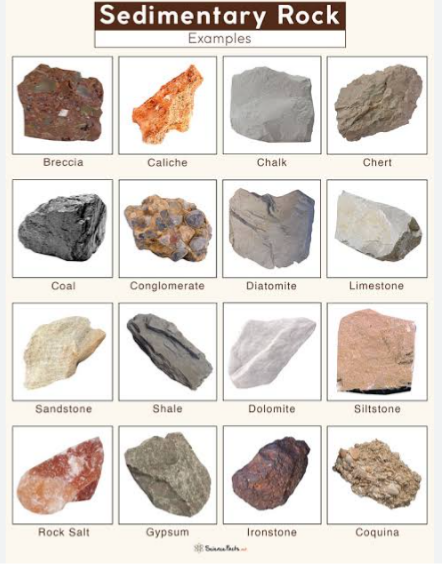
METAMORPHIC ROCK:
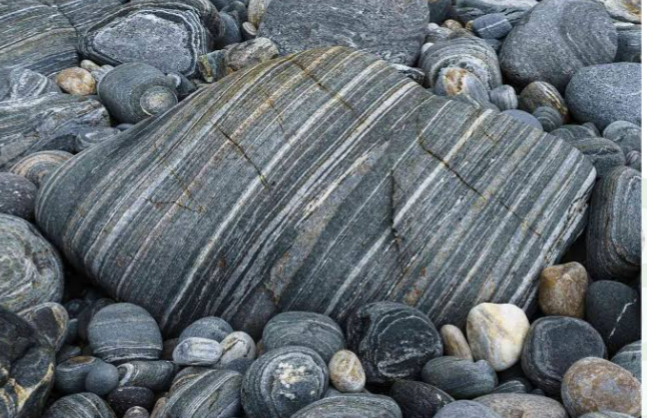
This is a rock produced when igneous rock or sedimentary rock is subjected to pressure, heat, or chemical diversion or any of the combinations. For example, shale is altered by pressure to form slate. Shale can also be altered by heat or pressure to form schist. During metamorphosis, there can be complete physical change to new grain size can occur, also new minerals can be formed. For example, complete re-crystalization of mineral in the shale forms a new mineral in the schist. The heat thus melt down the mineral particles in the shale and reorganise them to form schist. Limestone is altered to form marble,. Other examples of metamorphic rocks include Gneiss, Amphibolite, quartzites, slates etc.
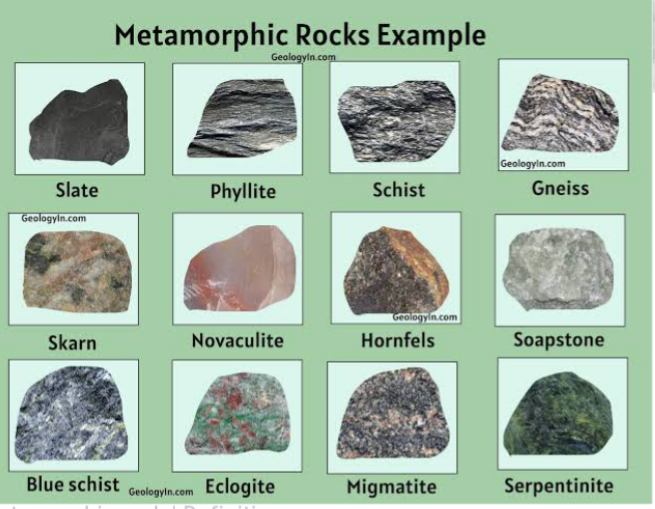
WEATHERING
Rock weathering is the disintegration or decomposition of rocks into loose parent materials which further breaks down to form soil particles.
Most times, it is only Rocks exposed at the earth surfaces that are subject to weathering which occur at varying degree.
The main reason why rock weather is because they have being displaced from the conditions under which they are formed. That is, conditions under which they are formed changes. Therefore, they become unstable. For example, extrusive rocks are formed under low temperature at the surface of the earth. They remain stable under the low temperature condition around their environment. Therefore once the environmental condition changes to high temperature, they become unstable and hence, they weather.
Note: the same type of rock can give rise to different types of soil depending on the nature of other factors especially climate.
TYPES OF WEATHERING
There are three types of weather, Physical weathering, chemical weathering and biological weathering.
PHYSICAL WEATHERING: This is the disintegration of rocks into smaller fragments. It result in decrease in particle size. Physical processes such as changes in temperature or when the rock is exposed to the effects of wind, rain and waves can bring about weathering. For example, when water get into cracks in a rock and it freezes, the ice will expand and push the cracks apart. When the ice melts, water formed from the melt down can get into the larger crack; if it freezes again it expands and can make the crack even bigger.
Wind can blow grains of different sand sizes against a rock. When bigger grains of sand carried by wind collide with rocks, weathering occurs.
CHEMICAL WEATHERING: This is the decomposition of rocks and minerals within the rocks. It result in decrease in particle size as well as the formation of new minerals called secondary minerals. Chemicals in rainwater can make changes to the minerals in a rock when they come in contact to each other. When
carbon dioxide from the air dissolves in rainwater, the rainwater becomes slightly acidic. When such rainwater comes into contact with minerals in the rock, weathering occurs
BIOLOGICAL WEATHERING: This involves disintegration of rocks by living organisms such as plants and animals. For example, a burrowing animal like earthworm, rabbits, rodents etc can burrow into a crack in a rock making it bigger and eventually splitting the rock into smaller particles. Plants on the other hand may grow in a crack formed in a rock and as their roots grow and increases in size, the crack widen and smaller particles break off from the rocks. Human activities such as using machines like plough and Harrow to till the soil in preparation for planting can break down rocks into smaller fragments as the machine grinds on the rocks along its path etc.
SOIL
Soil is the uppermost layer of Earth’s crust, formed by the continuous weathering of rocks.
It is made up of the following constituents :mineral particles, organic materials, air, water and living organisms. Due to these, soil is considered as the product of the environment. Plants anchor themselves to the soil using their root systems. Most plants also get their nutrients and water from the soil.
PROCESSES OF SOIL FORMATION
The process of Soil formation is called Pedogenesis
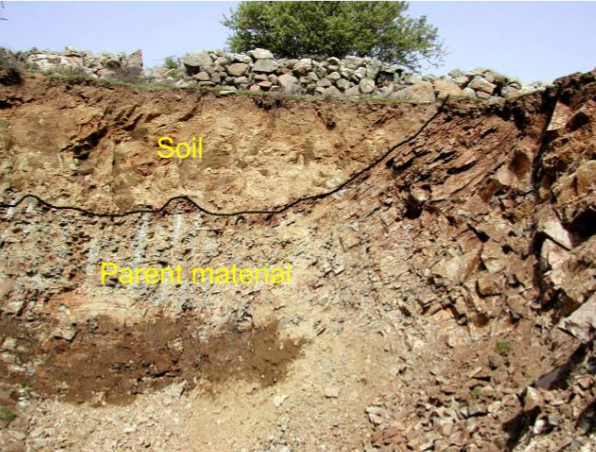
PARENT MATERIAL OR BED ROCK
Soil are formed from parent material. The parent materials are formed from the weathering of rocks. Therefore, Rocks are the source of all soil minerals. When parent material weathered (either chemically or physically), the particles formed are transported and deposited to form layers of soil. In soil profile, the bedrock is the parent material. Therefore, there is upward formation of soil in the profile. Also, rocks on surface of the earth also weather to produce soil which gets transported by agents like wind, ice and water etc
REMAINS OF PLANTS AND ANIMALS
When plants and animals die, their body parts decomposes to form the upper organic layer of the soil known as humus. The humus content in soils plays a very important role in soil fertility.
There are three processes of soil formation. They include: physical processes, chemical processes and biological processes.
1. PHYSICAL PROCESSES: The main physical processes include freezing and thawing, translocation, aggregation, and expansion and contraction.
2. CHEMICAL PROCESSES: The main chemical processes include hydrolysis, hydration, clay mineral formation and oxidation and reduction process
3. BIOLOGICAL PROCESSES: The main biological processes are decomposition of organic matter or humification, nitrogen transformation and translocation of materials from one place to another.
FACTORS OF SOIL FORMATION
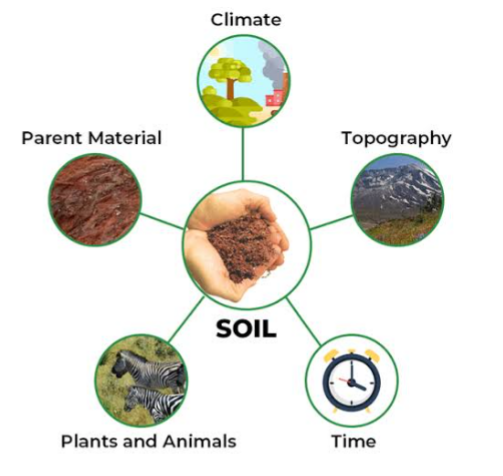
There are 5 factors that are responsible for soil formation. They are (a) Climate (b) parent material such as sandand rock (c) organisms such as earthworms, human (d) topography. (e) time
a) CLIMATE: Climate is the principal factor that determine soil formation of an area. It is also the average weather condition of an area. Temperature, precipitation and frost action have influence on the soil forming processes at different locations all over the world. It also determines the nature of weathering processes that takes place during soil formation. It also determine the type of vegetation found at areas around the world which in turn affect soil forming processes related to vegetation development.
b) PARENT MATERIAL : Parent material is the unconsolidated mineral and organic material in which soils are formed. It is composed of minerals or organic matter or both. The mineral materials ranges from consolidated rocks to unconsolidated sediments. When parent material break down, soils are formed. It determines to a large extent the physical and chemical characteristics of the soil.
c) ORGANISMS : living organisms such as bacteria, fungi, vegetation and animals do influence soil forming processes. Soil Microbs assist in decompose organic materials and return the products of decomposition to the soil. Larger animals such as earthworms, millipedes, centipedes and burrowing animals assist in mixing the soil with products of organic materials decomposition and change its physical characteristics. They make the soil more permeable to air and water. Their death and waste products cause aggregation of the soil particles and improve soil structure. Plants uptake minerals from the soil and use it to develop their body parts. When parts of the plant falls to the ground, the mineral element content in those parts become realised back to the soil when they decay. Vegetation of different areas such as forest and savanna areas do influence the characteristics of the soils that develop at such areas.
d) TOPOGRAPHY AND RELIEF :
The study of topography is called geomorphology. Topography is a dynamic system and not static.
The shape of the land surface, its slope and position on the landscape, greatly influence the kinds of soils formed. Topography also influences drainage and the amount of moisture in the soil. Soils that developed on higher elevations, hills and sloping areas are generally excessively drained or well drained. Most of the organic matter formed on such elevated areas are usually washed down slope to the valley bottom leaving the elevated areas with stony soils. Such soil at the valley bottom are usually rich in humus. This usually influence the types of Soils formed at this two locations.
The thickness of the soil is determined by the nature of the relief.
e) TIME: The process of soil formation from rock to parent material and finally soil take a long time or years and decades to complete. Soils found around our environment have been formed ages past.
Soils formed at upper horizons are soils that just developed. While soils at lower horizons are soils formed millions of decades ago.
In conclusion, the above factors and processes all combine to form the different types of soil found at different location on the earth
